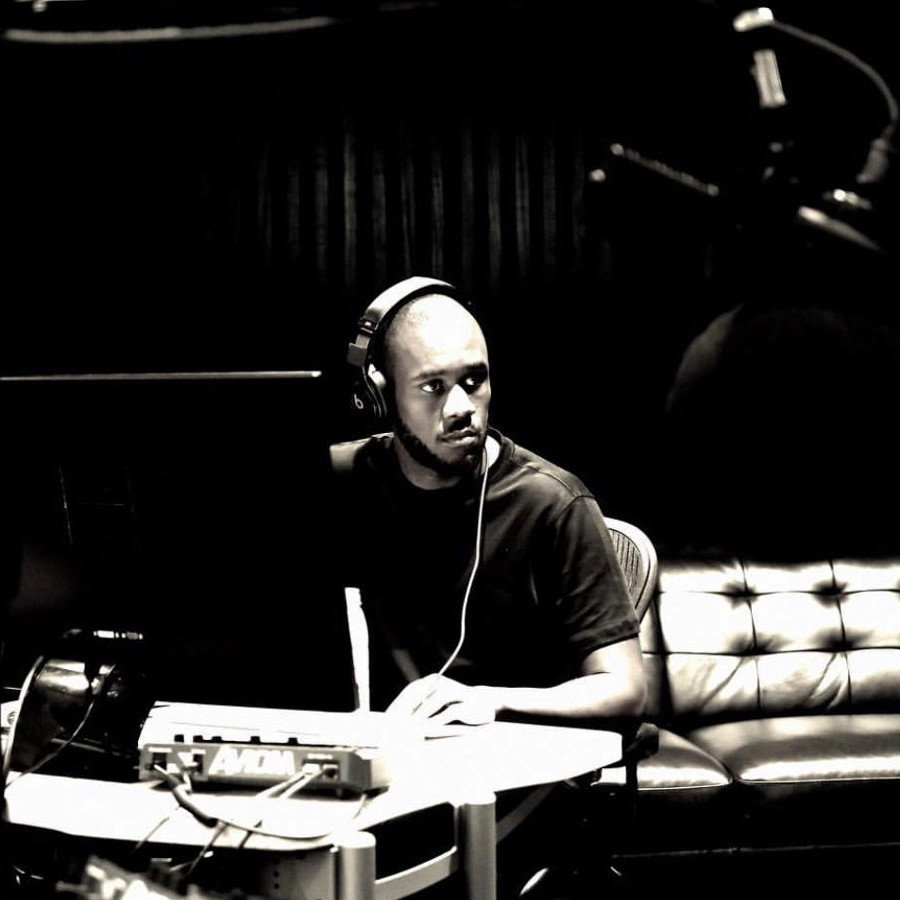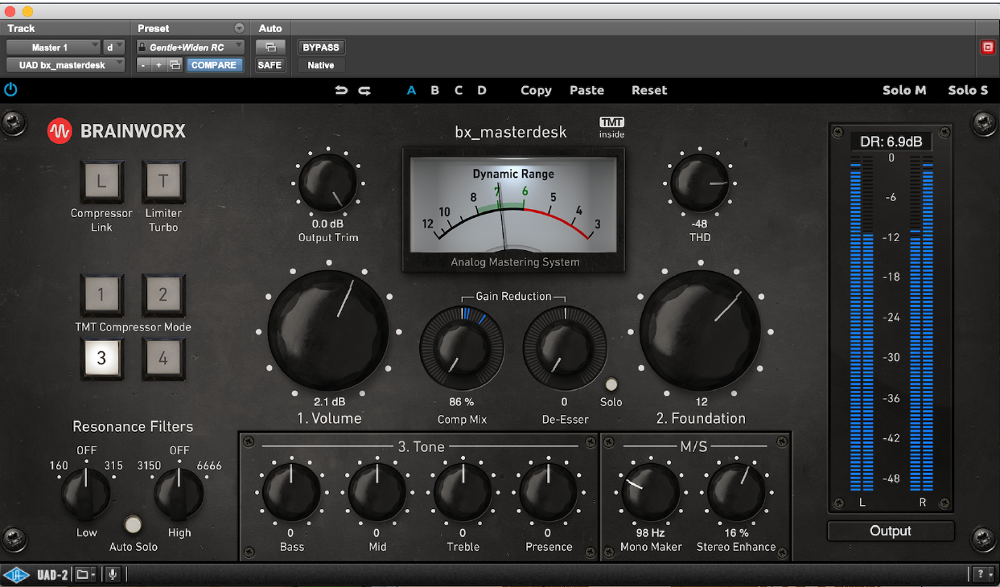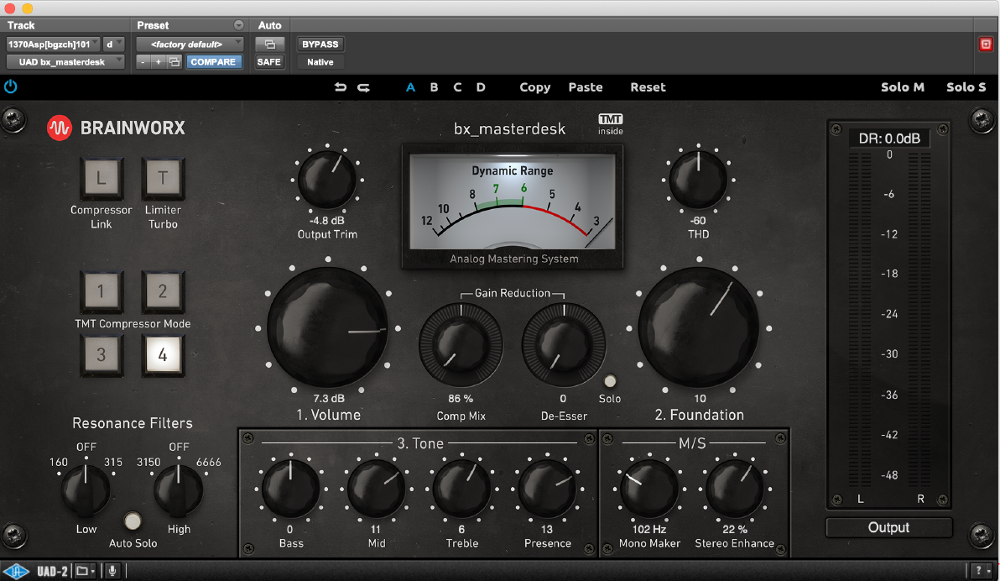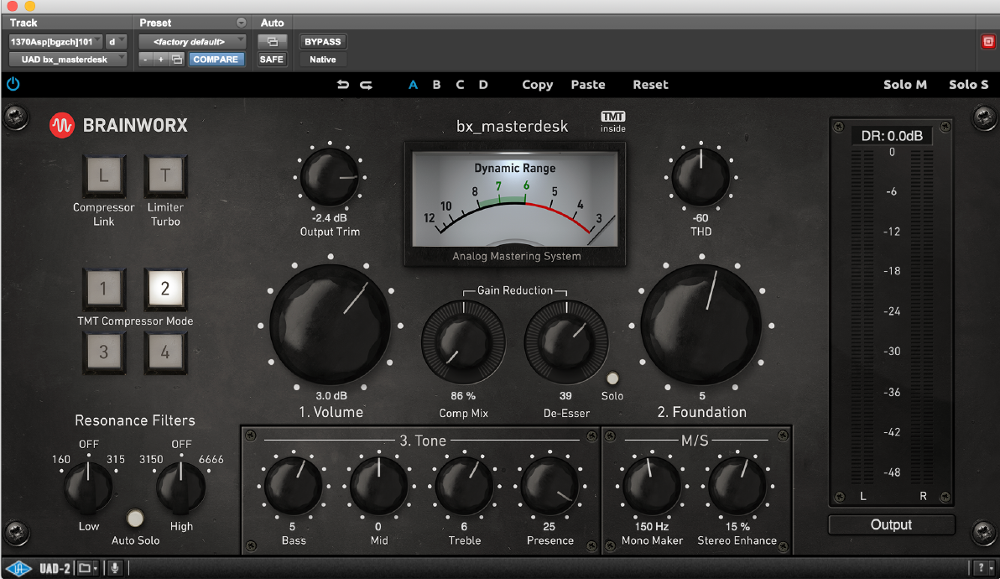3 Techniques: Brainworx bx_masterdesk—with Mixer Quentin “Q” Gilkey
Wider, Warmer, LOUDER! Prepare to enter a one-stop-shop for adding the final touches to any mix.
In this latest “3 Techniques” LA-based mix engineer Quentin “Q” Gilkey will walk you through the Brainworx bx_masterdesk plugin for Universal Audio’s UAD platform or native from Plugin Alliance. Based on a complete chain of high-end analog mastering processors, the bx_masterdesk was designed to make professional mastering intuitive, featuring a compressor section with four different operating modes, an easy-to-use EQ, dual resonant filters, precise meters, and the M/S processing capabilities that Brainworx is renowned for.
The LA-based Q became best friends with the bx_masterdesk by applying it to a deep discography that includes Dr. Dre, Eminem, Anderson .Paak and many more spanning hip hop, R&B and beyond. An afficionado of every stage of music production—recording, mixing, and mastering—Q is never afraid to share his mixing techniques or, most importantly, learn from others.
Today YOU get to learn from Q. Prepare to expand your horizons, with his timely trio of sweet mixing techniques focused on the mix bus, guitars and backing vocals.
Technique #1: Mix Bus
Although it is advertised mostly as a limiter, I mostly use the bx_masterdesk at the final stage of my mix bus to shape the mix. It is an excellent, simple tool to use with amazing dynamic algorithms which allows you to drive your mix’s levels as well as shape tone.
Before turning a single knob I always make sure the input level is low enough to give yourself headroom to push the levels a bit. I always start with the “Compressor Mode” set to 2 or 3 (1 being the hardest compression and 4 the lightest). I always set the “Gain Reduction” to its lowest setting as it has a tendency to get out of hand.
Turn the volume knob slowly to start hearing what is happening. As you can see from the screenshot I never have to go very far before I start hearing elements come together. If you feel your mix is lacking a bit of warmth you can turn the “Foundation” knob up. Again, be careful here as I’ve found it never needs to go too far.
Lastly, an incredible tool of this plugin is the M/S feature—it may be my favorite feature. The knobs speak for themselves. When I want to add width to the mix I’ll begin to turn the “Stereo Enhance” up. Again, I find that too much will create phasing issue or simply create artificial elements within the mix.
Once, you’ve found the sweet spot turn the “Mono Maker” up to find where your bass sits the best. I personally like my bass more centered so by engaging this feature it will remove it from the stereo enhancing.
Technique #2: Guitars
Whether mono or stacked guitars, you can easily shape guitar lines with the bx_masterdesk.
By utilizing the compressor and “Foundation” you can make them feel more cohesive when stacked. You can see from the Screenshot below that, because the input signal is lower than a full mix, I am able to turn the volume knob up which has given a nice, solid compression. I am using the M/S to open up the center for other mix elements and to give a deeper stereo effect.
Different from the mix bus you can see I utilize the tone knobs to help in the EQ process. You can usually get away with more with these to truly hear the difference.
Although I’m not utilizing it here, the “De-Esser” knob could be used if you feel like your guitars have a harshness in the high end. Sometimes it will help to settle that a bit.
Technique #3: Background Vocals
One of my favorite pieces of hardware for background vocals is the Summit DCL-200. I feel as though bx_masterdesk gives me that sound and a little more with the “Tone” and “M/S” options. I always find myself pushing the compression more here. You can see Compressor Mode 2 is being used and the Volume is up slightly, but with more compression you shouldn’t have to push the Volume knob as much.
I’ve done some tone work to them as well and I tend to push presence more on vocals. I always feel if I can get more presence from background vocals then I’m usually able to push them back behind the lead a bit more, but still giving them the space they require.
Final W.O.W. (Words of Wisdom):
In summary, I always say: toy around with the settings. Find what works for you. If you’re using it on your mix bus make sure you’re staying between 6-8dB dynamic range and you’ll be at a professional level. Other little things I do is put a mastering EQ after, then my limiter. Happy Mixing!!
– Q
Please note: When you buy products through links on this page, we may earn an affiliate commission.












[…] In this latest “3 Techniques” LA-based mix engineer Quentin “Q” Gilkey will walk you through the Brainworx bx_masterdesk plugin for Universal Audio’s UAD platform or native from Plugin Alliance. Based on a complete chain Read more… […]